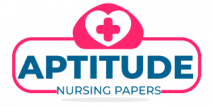Safety Risks
Culture and Environment of Safety in Medication Administration
In the healthcare setting, medication administration is a critical and complex process that requires utmost attention and diligence to ensure patients’ safety. When preparing and administering medications, the culture and environment of safety should prioritise patients’ well-being and safety. This can be achieved through clear communication, thorough medication reconciliation, and medication preparation and administration process standardisation (Dirik, Samur, Seren Intepeler, & Hewison, 2019). Healthcare providers should be trained and competent in medication management and encouraged to speak up if they notice potential errors or discrepancies.
The physical environment should be clean and organized, with proper storage of medications and equipment readily available. Continuous monitoring, evaluation, and improvement of the medication management process should be implemented to ensure that patient safety remains a top priority. Ultimately, the safety culture should be ingrained in the healthcare team’s values and beliefs (Dirik, Samur, Seren Intepeler, & Hewison, 2019). A medication safety culture needs checks and balances in the system and an environment that pushes pharmacy professionals to work together as a team to improve how they do their jobs and report mistakes without fear of being blamed or punished.
Common Breach of Medication Administration
One common breach of medication administration is administering the wrong medication to a patient. This can occur when a healthcare provider reads the wrong medication label or orders the wrong medication. This error can also be caused by poor communication between healthcare providers and pharmacists, incorrect documentation, or improper storage of drugs.
Factors that Lead to Errors in Documentation Related to Medication Administration
Errors in documentation related to medication administration can lead to medication errors and jeopardize patient safety. Three factors that can lead to errors in the documentation related to medication administration include illegible handwriting, incomplete or inaccurate documentation, and inadequate communication among healthcare professionals (Wondmieneh, Alemu, Tadele, & Demis, 2020).
Illegible handwriting is a common problem in medication documentation that can result in confusion and misinterpretation of medication orders. Healthcare professionals should ensure that their handwriting is legible and avoid using abbreviations or acronyms that can be misinterpreted.
Incomplete or inaccurate documentation is another factor that can lead to medication errors (Wondmieneh, Alemu, Tadele, & Demis, 2020). Healthcare professionals should ensure they document all relevant information, including the medication name, dose, route, time, and any adverse reactions or changes. Inaccurate documentation can lead to incorrect medication administration or duplication of medication.
Inadequate communication among healthcare professionals is also a factor that can lead to errors in documentation related to medication administration. Healthcare professionals should ensure that they communicate effectively with each other to provide accurate and timely documentation. Communication can include discussing medication changes, verifying medication orders, and clarifying discrepancies.
Preventing Medication Errors
Preventing medication errors is the responsibility of all healthcare professionals involved in medication administration. To avoid medication errors, healthcare providers should know the five “rights” of medication administration. These are the right patient, drug, dose, route, and time (Dirik, Samur, Seren Intepeler, & Hewison, 2019). Healthcare providers should also double-check all medications and orders before administering them. Additionally, healthcare providers should take the time to explain all medicines to the patient, including the name of the drug, how to take it, and any potential side effects. Finally, healthcare providers should ensure that all documentation related to medication administration is accurate and up-to-date. This includes verifying the patient’s name and allergies, recording the medication name and dose, and confirming that the medication was administered as ordered.
References
Dirik, H. F., Samur, M., Seren Intepeler, S., & Hewison, A. (2019). Nurses’ identification and reporting of medication errors. Journal of Clinical Nursing, 28(5-6), 931–938. https://doi.org/10.1111/jocn.14716
Wondmieneh, A., Alemu, W., Tadele, N., & Demis, A. (2020). Medication administration errors and contributing factors among nurses: a cross sectional study in tertiary hospitals, Addis Ababa, Ethiopia. BMC Nursing, 19(4), 1–9. https://doi.org/10.1186/s12912-020-0397-0
